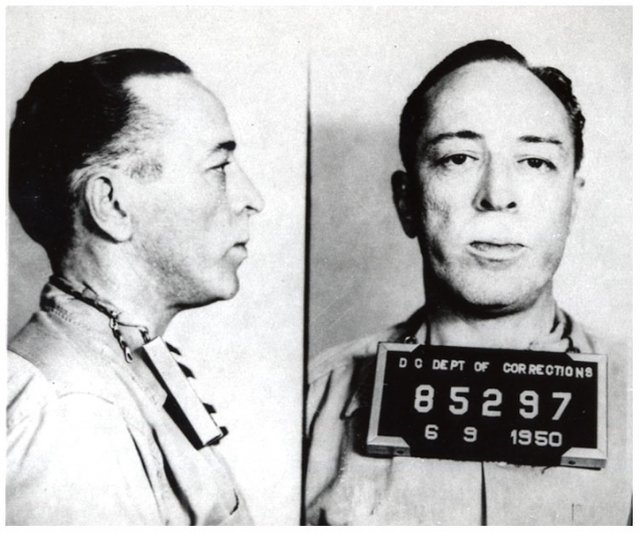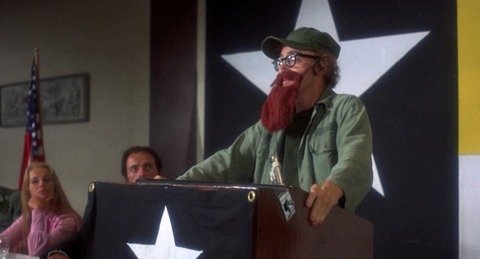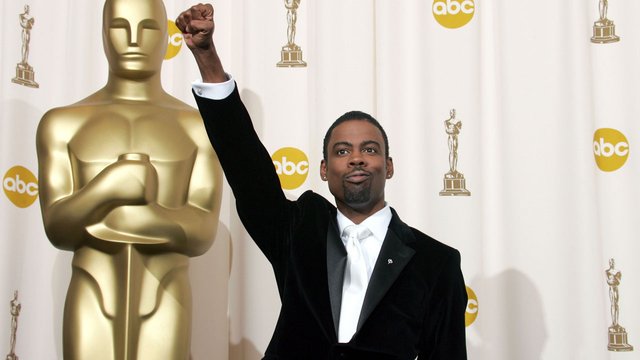Communism: Obscured by Film
In the nineteenth century, many people were laughing at Karl Marx; in the twentieth century, many people were laughing at Groucho Marx. His and his brothers’ rapid-fire wit and buffoonery were a much needed elixir for the devastation and anxiety that arose during imminence of the Great Depression—an opiate of the masses, if you will—but it was no dose of Marxisms was strong enough to counteract the Red Scare that almost synced with his peak in the Hollywood.
To give the Red Scare some brief background, the Communist Party USA was founded in 1919, irrespective to the conclusion of the First World War, focusing more of its attention to Lenin’s October Revolution, and it began as more or less, a party with a mostly syndicalist stance until giving rise to the Popular Front, Stalinists who couldn’t lift a sledgehammer if it dangled between their legs, during the Second World War. One influence, of many, that the Popular Front era boasted was over the intellectual symposia (think Sinclair Lewis or Dwight MacDonald) and the artistic literati (imagine Dalton Trumbo). The first Red Scare was mostly concerned with the CPUSA, whereas the second was decried for focusing more on the Popular Front’s influence on the liberal arts for the sole purpose of identifying and outing Soviet spies.
(If you, reading this, were “educated” by the public school system, you should not only be familiar with the Smith Trials, McCarthyism, the House Un-American Activities Committee, and the Hollywood blacklist, but recall the implication that it was a dark point in American history, especially when juxtaposed with the Civil Rights era. I, personally, see nothing particularly wrong with exposing those who subscribe to an ideology that wishes to curtail freedom of speech, because their post-World War II infiltration of government education—which, while implicit, is egalitarian in narrative—and the explicit infiltration of academia affirms that this is their objective. That such a curriculum teaches us about the Second Amendment in the same breath shows the otherwise opaque inconsistency of the public school system.)
Dalton Trumbo and Spartacus

Dalton Trumbo, acclaimed screenwriter and member of the CPUSA from 1940-1948, was a member of the Hollywood Ten, developed the screenplay for Stanley Kubrick’s Spartacus in 1960 under the pseudonym, Sam Jackson in order to find work in Hollywood, as is later explained by Kirk Douglas in his 2012 book, I Am Spartacus!: Breaking a Film Breaking a Blacklist:
“There was a pall over the whole country,
“The House Committee on Un-American Activities was searching for communists who they thought would bring down our government. They especially accused people in the movies. Particularly the writers. It was an awful situation in Hollywood because it became a blacklist.
“I’m ashamed to say I started off like everybody else.
“My production company was making the movie Spartacus and I employed Dalton Trumbo [as a writer] under the pseudonym of Sam Jackson.” [1]
The project seems an extremely uncanny choice for Trumbo. While the “I am Spartacus” scene parallels the McCarthy era and the solidarity of the Hollywood Ten, the protagonist, himself, is regarded as a proto-communist hero in Marxist circles. In these circles, Spartacus is seen as an historical icon, and it was the intention of the story’s author, Howard Fast, to present him as a slave to confirm his status as a “genuine representative of the ancient proletariat”[2].
Fast, himself, was blacklisted by HUAC and was sent to prison, where he would eventually write the novel of the same name, for his refusal to testify, but more or less, used the narrative to mirror civil rights, possibly as apologia for the humanist aspects of communism and the concern for the oppressed and lower class. Moreover, the voiceover at the beginning of the film, an addendum to Fast’s story, goes so far as to invoke Christianity:
In the last century before the birth of the new faith called Christianity which was destined to overthrow the pagan tyranny of Rome and bring about a new society, the Roman Republic stood at the very center of the civilized world. “Of all things fairest,” sang the poet, “First among cities and home of the Gods is Golden Rome.” Yet even at the zenith of her pride and power, the Republic lay fatally stricken with the disease called human slavery. The age of the dictator was at hand, waiting in shadows for the event to bring forth. In that same century, in the conquered Greek province of Thrace, an illiterate slave woman added to her master’s wealth by giving birth to a son whom she names Spartacus. A proud rebellious son, who was sold to living death in the mines of Libya, before his thirteenth birthday. There under whip and chain and sun he lived out his youth and his young manhood, dreaming the death of slavery 2000 years before it finally would die.
While this is an historically accurate interpretation, Christianity, here, seems like somewhat of a scapegoat to obscure Trumbo’s affiliation with the film or any communist influence, thereon; these are, after all, the first words spoken in the film. (Virtue signaling truly is the exposition of communication, isn’t it?) Trumbo’s faith is of so little significance to his legacy that his religious affiliation is an anomaly, but as previously mentioned, in some form or another, Marx described religion to be “the opiate of the masses” and Lenin is famously quoted as stating, “Communism begins where atheism begins,” in his famous 1920 speech. (To summarize the Leninist-Marxist animosity toward faith, revolution in Russia meant suppression of the Russian Orthodox Church, the principles of which Russia abided for centuries.) Resultantly, many of its representatives are apathetic toward Christianity.
Take for instance, Saul Alinksy, community organizer and author of Rules for Radicals. Rule 4 of his instruction manual for those willing to read it, reads:
Make opponents live up to their own book of rules. “You can kill them with this, for they can no more obey their own rules than the Christian church can live up to Christianity.”
(Alinsky, 1971, Rules for Radicals, p. 128)
When he is not using Christianity as an example of revolution in his book, Alinsky is hinting toward his skepticism, saying that the quintessential organizer “does not have a fixed truth; to him truth is relative and changing...” (Alinsky, Rules for Radicals, p. 11). This guideline for community organization has as much influence in modern left-wing grassroots movements, as Spartacus has had on communist subtext in film.
Despite the source material not being an original idea from Trumbo, himself, that he would go through such lengths as to work pseudonymously shows dedication, and, suspiciously enough, some sort of urgency on his part, and the significance of those associated with the film—Kubrick, one of film’s most renowned directors, Trumbo, one of film’s most renowned screenwriters, and Douglas, one of film’s most renowned actors—provides us a milestone in film history that cannot be ignored; while the film has our attention, it wouldn’t hurt to scrutinize it.
Woody Allen and The Academy

Screenwriters comprised a hefty percentage of those blacklisted by HUAC and when it was abolished in 1975, freedom of the press seemed to be restored in America. In 1976, a black comedy film called The Front, which addressed the subject was released. The film’s protagonist, a down-on-his-luck schlemiel who signs is paid to sign his names on television scripts written by a blacklisted telewriter, was played by none other than Woody Allen. The film, written by Walter Bernstein, who was also blacklisted, was nominated for an Academy Award for Writing of an Original Screenplay in the 50th Academy Awards.
(Note: It was one of few films that Allen had written, and Bernstein’s writing of the film was likely a selection by Allen, himself to realize a comedy that displayed a depiction of the entertainment industry under McCarthyism that was as accurate as possible.)
The year that The Front received the nomination, Allen released what is believed by many to be his magnum opus, Annie Hall. It won an Academy Award for Best Picture and for Best Original Screenplay, as well as a nomination for Best Actor for Allen, in 1978. This is the first recognition Allen had received from the Academy in his, thereupon, 28-year career, from which one could conclude that the screenplay for The Front propelled Allen into the mainstream as an actor. However, ever since, Allen has received 17 nominations for his work from the Academy.
This reflects that the Academy saw something of an opportunity with Allen to utilize the philosophical and literary inspiration that supplements his work. Allen was greatly influenced by French new wave cinema, as can be seen in works like Manhattan and Life and Death, and he never shut up about it. One notable auteur from this era who has had an influence on Allen is Jean-Luc Godard. Godard has explored themes that were pendular between existentialism and Marxism.
Woody may not be a communist, himself, but he burst onto the scene as a tool in the newly liberated industry. Allen is not too stupid to ignore Marxism, he’s just too pessimistic to care about it—one would have to be quite optimistic to see that everything would be better if nothing were privately owned—but his constant praise for someone with such controversial beliefs would bring them to the foreground of film enthusiasm, in or outside of film school.
In Film Today

Modern film history and taxonomy needs no introduction to Marxism, as it syncs with ever-evolving the film industry. The themes students are required to explore throughout their curricula—queer theory, postmodernism, feminist film theory, etc.—are very Foucaultian and post-structuralist in nature, if not bearing striking resemblance to gender studies courses. Take this excerpt from a film course at the California Institute of Arts:
This seminal text by Jacques Rivette marks a turning point in film theory and criticism, opening the door to a critical investigation on how the form of a film is producing as much discourse as its expressed content. The shot is at the center of any critical discourse on cinema. By returning to the basics of what a shot can do and cannot do, as well as the theoretical and ideological applications of the way it is composed and articulated within the frame, in relation to the off-screen space and the camera movements, we will investigate what it at the heart of the production of meaning in modern cinema. Here we will take the notion of modernity in the wake of authors such as Jean-Luc Godard (for whom the history of cinema is divided into two: before and after concentration camps) and Gilles Deleuze (who locates the birth of cinematic modernity in post-war Europe). It becomes clear that a crucial combination took place (as noted by Paul Virilio) when the apparatus of cinema met with the apparatus of mass killing during WWII.
(California Institute of Art, CS572: The Tracking Shot in Kapo—Aesthetics and Politics in the Cinematic Representation of War, Destruction and Sexual Violence, 2010)
All of the names listed are on the left side of things. Much like the aforementioned Godard, Deleuze influenced many postmodern philosophers and his 1972 book, Anti-Oedipus: Capitalism and Schizophrenia critiques capitalism through Freudian concepts of subconscious desire and a Karl Marx’s materialist account of history. With this in mind, one can put the reason the class has been told to read Cinema 2: The Movement-Image, which focuses on the evolution of film from a Hegelian and Nietzschean standpoint, instead of Cinema 1, which, while focusing on the technical perspective of film, still addresses the historical aspect, into perspective.
No doubt, the very same crowd that was on the curriculum of that year, watched The Hurt Locker, an antiwar, and to an extent, anti-imperialist film, whose critique of the Iraq War is very similar to previous work by Oliver Stone, take home the Academy Award for Best Picture. The film’s director, Kathryn Bigelow’s political views are unclear, but her inclusion of the film’s opening quote, “The rush of battle is often a potent and lethal addiction, for war is a drug,” is attributed to Chris Hedges, a self-proclaimed socialist who is unabashedly critical of the Iraq War.
If this is all conjecture, the Academy’s selection of The Hurt Locker may or may not be of any affirmation of the sentiments expressed throughout this essay and if the latter is at all the case, it depicts a tonal shift in the Academy’s selection process, as in a more recent ceremony in which Birdman, or The Unexpected Virtue of Ignorance took home the Academy Award for Best Picture, over Selma, which focused on the Selma voting rights marches of 1965. One could argue that the originality of the script, the metafictional themes expressed throughout the film, the stellar performances of its cast, and, of course, the fact that it gave off the illusion that it was filmed in one take when there may have been close to 20 shots used to film it, may have solidified its status as “Oscar bait”, but Selma did have a 99% score on the Tomatometer, so the outrage is justified.
(One could say that this Oscar “snub” and the Oscars So White controversy may have led the Academy to select comedian Chris Rock as the night’s host as retribution for not acknowledging their white privilege.)
Conclusion
When the era of McCarthyism ended, neo-McCarthyism emerged. The witch-hunt for communists was no longer in play and the resurgence of what resembled the blacklisting of yesteryear has manifested itself in the form of the authoritarian left outing whomever they perceive to be racist; they have shifted its attention from the film industry to social media. The people who subscribe to the very ideology that was curtailed in a nation that allows free speech from those who wish to curtail it, are doing the same, the only difference being that their evidence is unfounded.
Anyone who tells you that there is no such thing as neo-McCarthyism is a communist.